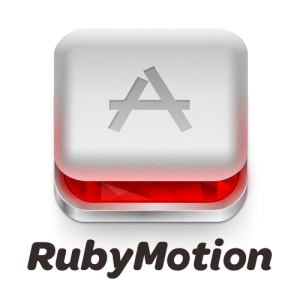-
Application Builders
Everytime I setup a new Rails application I have to go through the configuration and change many things. It’s as if there is a specific configuration that I prefer. For instance, I like using the Twitter Bootstrap framework for my front-end…at least just to get started. I like to use Rspec and Cucumber for testing. The list goes on.
I just stumbled upon this argument that the ‘rails’ executable provides when generating a new Rails application.
-
Technical Debt
If I were to pick one area of advice for any aspiring business men seeking their Master of Business Administration degree, with the intent of working for a company that involves developers, I recommend that you explore this concept. If you’re unaware of this possibility, your project might eventually end up drastically behind.
-
Why Ruby Was Named After a Gemstone
Matz: Ruby is named after the precious gemstone, it’s not an abbreviation of anything. When I started the language project, I was joking with a friend that the project must be code-named after a gemstone’s name (àla Perl). So my friend came up with “ruby”. It’s a short name for a beautiful and highly valued stone. So I picked up that name, and it eventually became the official name of the language.
Taken from An Interview with the Creator of Ruby by Bruce Stewart
-
Downloadable Documentation
Some people want to download the documentation for the languages they’re using. This is needed when an internet connection isn’t available (like using a laptop on a plane), or even for the sake of speed.
Here are two sources of downloadable documentation.
-
History of Internationalization in Software
Here are two articles that were recommended by co-workers today.
-
Mobile Application Performance Monitoring and Management
It seems like the industry is all astir about mobile these days. I’m thinking of jumping into such interests.
Heard about this today. It’s like New Relic for mobile apps.
-
Use Ruby to Develop iOS or Mac OSX
I haven’t evaluated this yet, but another developer at my local Ruby meetup group said that this has been used in production and fairs pretty well.
“RubyMotion is a revolutionary toolchain that lets you quickly develop and test native iOS and OS X applications for iPhone, iPad and Mac, all using the awesome Ruby language you know and love.”

-
Uninstalling Command Line Tools for Xcode
I ran into a problem trying to install Ruby 2.0.0 via RVM over the weekend. When I got to work the next day and needed to do work using Ruby 1.8.7, I ran into issues. This led to updating RVM using ‘rvm get stable’, and then trying to reinstall Ruby 1.8.7.
I was then prompted that the version of Xcode I’m using is older, and thus needs to be updated. I tried to look for the command to uninstall it, just to ensure that the new installation (possibly via the App Store) is clean. I found this command to work for Mac OSX 10.8.3 (Mountain Lion).
sudo /Library/Developer/4.1/uninstall-devtools -mode=all
-
Setting Rspec as the Default
When setting up a new Rails application you’ll likely want to make Rspec the default test framework for new models that are generated with scaffolding. This is usually handled by default by the Rspec gem after you install it. It’s possible to explicitly set this however, as well as other configurations for generators.
This is explained in more details in the Customizing Your Workflow section of the Rails generator documentation. You even have the option of turning off the generation of stylesheets if preferred.
-
Remote Pair Programming
I really find pair programming to be annoying. It seems like a waste of time as compared to doing peer code review over a Git branch that has been squashed. But I really can’t knock something totally unless I’ve tried it for a while.
Some people shared these resources today which I wanted to archive here. At least with remote pair programming you still get to have control of your computer, instead of sitting aside and watching idly. Here are some remote collaborative coding tools. These could also be useful for people wanting to remotely teach others how to code certain things.
- SubEthaEdit
- Sublime Collaboration - Plugin for the Sublime Text Editor
- Mad Eye - Web based collaborative coding tool
